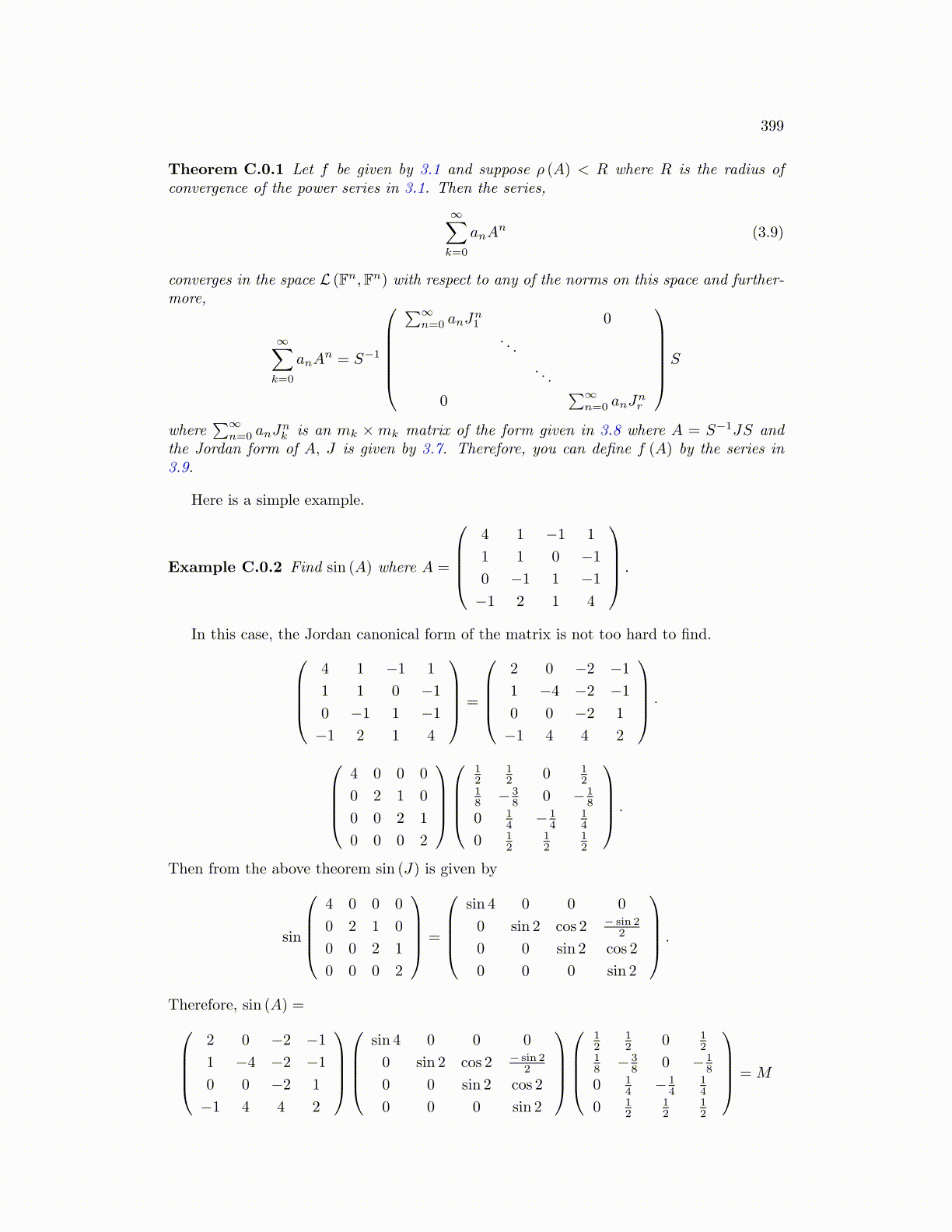
399
Theorem C.0.1 Let f be given by 3.1 and suppose ρ (A) < R where R is the radius ofconvergence of the power series in 3.1. Then the series,
∞∑k=0
anAn (3.9)
converges in the space L (Fn,Fn) with respect to any of the norms on this space and further-more,
∞∑k=0
anAn = S−1
∑∞
n=0 anJn1 0
. . .
. . .
0∑∞
n=0 anJnr
S
where∑∞
n=0 anJnk is an mk ×mk matrix of the form given in 3.8 where A = S−1JS and
the Jordan form of A, J is given by 3.7. Therefore, you can define f (A) by the series in3.9.
Here is a simple example.
Example C.0.2 Find sin (A) where A =
4 1 −1 1
1 1 0 −1
0 −1 1 −1
−1 2 1 4
.
In this case, the Jordan canonical form of the matrix is not too hard to find.4 1 −1 1
1 1 0 −1
0 −1 1 −1
−1 2 1 4
=
2 0 −2 −1
1 −4 −2 −1
0 0 −2 1
−1 4 4 2
·
4 0 0 0
0 2 1 0
0 0 2 1
0 0 0 2
12
12 0 1
218 − 3
8 0 − 18
0 14 − 1
414
0 12
12
12
.
Then from the above theorem sin (J) is given by
sin
4 0 0 0
0 2 1 0
0 0 2 1
0 0 0 2
=
sin 4 0 0 0
0 sin 2 cos 2 − sin 22
0 0 sin 2 cos 2
0 0 0 sin 2
.
Therefore, sin (A) =2 0 −2 −1
1 −4 −2 −1
0 0 −2 1
−1 4 4 2
sin 4 0 0 0
0 sin 2 cos 2 − sin 22
0 0 sin 2 cos 2
0 0 0 sin 2
12
12 0 1
218 − 3
8 0 − 18
0 14 − 1
414
0 12
12
12
=M